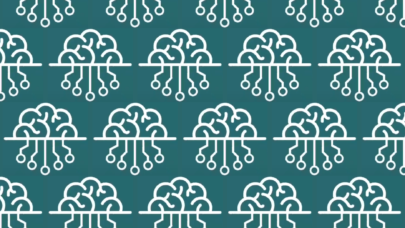
Ohio Supercomputer Center Debuts ‘Ascend’ GPU Cluster
January 19, 2023
Less than 10 months after it was announced, the Columbus-based Ohio Supercomputer Center (OSC) has debuted its Dell-built GPU cluster, “Ascend.” Designed to Read more…

NSF’s Supercomputer-Powered ICICLE Institute Aims to Democratize AI
August 9, 2021
The NSF has announced a new institute, funded to the tune of tens of millions of dollars and supported by a series of major supercomputer centers: ICICLE. “ICICLE,” which is shorthand for the AI Institute for Intelligent Cyberinfrastructure with Computational Learning in the Environment, aims... Read more…

Ohio Supercomputer Center Takes Aim at the Coronavirus’ RNA
February 2, 2021
The current COVID-19 vaccines being distributed around the country instruct the body on how to fight the coronavirus’ key proteins in advance of an infection. Read more…

OnDemand Portal Accelerates HPC Work for Academic and Industrial Users
December 21, 2020
Historically, the HPC community has done their work via a command-line interface to enter system commands and move through files or directories, as well as run Read more…

OSC Preps Launch of 1.3PF Pitzer Cluster from Dell-EMC
November 1, 2018
The Ohio Supercomputer Center (OSC) today reported it is in the final stages of firing up its new 1.3 petaflops (theoretical peak) Pitzer Cluster from Dell-EMC. Read more…

Ohio Supercomputer Center Dedicates ‘Owens’ Cluster
March 29, 2017
In a dedication ceremony held earlier today (March 29), officials from Ohio Supercomputer Center (OSC) along with state representatives gathered to celebrate th Read more…

Life in a Drop: Ohio Supercomputer Helps Prove Hydration’s Role in Protein Folding
July 14, 2016
It’s perhaps fitting that in the middle of the summer, when water management is a common challenge, that a paper in the Proceeding of the National Academy of Sciences (PNAS) offers more proof that life as we know it can’t occur without water. Using Ohio Supercomputing Center resources, researchers have shown the critical role water plays in actively guiding protein folding and movement. “For a long time, scientists have been trying to figure out how water interacts with proteins... Read more…

Glacier Researchers Apply 3D Models to Helping Nepal
May 5, 2015
US-based glacier researchers are redirecting their usual activities toward the Nepali earthquake relief effort. The research teams – one at The Ohio State Uni Read more…

- Click Here for More Headlines

Whitepaper
Transforming Industrial and Automotive Manufacturing
In this era, expansion in digital infrastructure capacity is inevitable. Parallel to this, climate change consciousness is also rising, making sustainability a mandatory part of the organization’s functioning. As computing workloads such as AI and HPC continue to surge, so does the energy consumption, posing environmental woes. IT departments within organizations have a crucial role in combating this challenge. They can significantly drive sustainable practices by influencing newer technologies and process adoption that aid in mitigating the effects of climate change.
While buying more sustainable IT solutions is an option, partnering with IT solutions providers, such and Lenovo and Intel, who are committed to sustainability and aiding customers in executing sustainability strategies is likely to be more impactful.
Learn how Lenovo and Intel, through their partnership, are strongly positioned to address this need with their innovations driving energy efficiency and environmental stewardship.
Download Now
Sponsored by Lenovo
Whitepaper
How Direct Liquid Cooling Improves Data Center Energy Efficiency
Data centers are experiencing increasing power consumption, space constraints and cooling demands due to the unprecedented computing power required by today’s chips and servers. HVAC cooling systems consume approximately 40% of a data center’s electricity. These systems traditionally use air conditioning, air handling and fans to cool the data center facility and IT equipment, ultimately resulting in high energy consumption and high carbon emissions. Data centers are moving to direct liquid cooled (DLC) systems to improve cooling efficiency thus lowering their PUE, operating expenses (OPEX) and carbon footprint.
This paper describes how CoolIT Systems (CoolIT) meets the need for improved energy efficiency in data centers and includes case studies that show how CoolIT’s DLC solutions improve energy efficiency, increase rack density, lower OPEX, and enable sustainability programs. CoolIT is the global market and innovation leader in scalable DLC solutions for the world’s most demanding computing environments. CoolIT’s end-to-end solutions meet the rising demand in cooling and the rising demand for energy efficiency.
Download Now
Sponsored by CoolIT
Advanced Scale Career Development & Workforce Enhancement Center
Featured Advanced Scale Jobs:
HPCwire Resource Library
HPCwire Product Showcase
© 2024 HPCwire. All Rights Reserved. A Tabor Communications Publication
HPCwire is a registered trademark of Tabor Communications, Inc. Use of this site is governed by our Terms of Use and Privacy Policy.
Reproduction in whole or in part in any form or medium without express written permission of Tabor Communications, Inc. is prohibited.
























